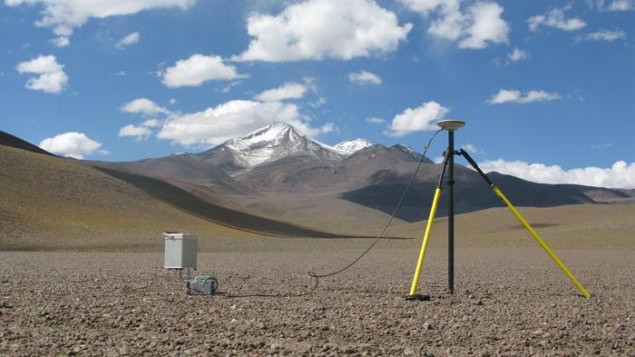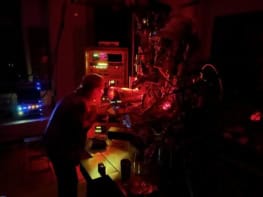
The first high-resolution images of Bolivia’s Uturuncu volcano have yielded unprecedented insights into whether this volcanic “zombie” is likely to erupt in the near future. The images were taken using a technique that combines seismology, rock physics and petrological analyses, and the scientists who developed it say it could apply to other volcanoes, too.
Volcanic eruptions occur when bubbles of gases such as SO2 and CO2 rise to the Earth’s surface through dikes and sills in the planet’s crust, bringing hot, molten rock known as magma with them. To evaluate the chances of this happening, researchers need to understand how much gas and melted rock have accumulated in the volcano’s shallow upper crust, or crater. This is not easy, however, as the structures that convey gas and magma to the surface are complex and mapping them is challenging with current technologies.
A zombie volcano
In the new work, a team led by Mike Kendall of the University of Oxford, UK and Haijiang Zhang from the University of Science and Technology of China (USTC) employed a combination of seismological and petrophysical analyses to create such a map for Uturuncu. Located in the Central Andes, this volcano formed in the Pleistocene era (around 2.58 million to 11,700 years ago) as the oceanic Nazca plate was forced beneath the South American continental plate. It is made up of around 50 km3 of homogeneous, porphyritic dacite lava flows that are between 62% and 67% silicon dioxide (SiO2) by weight, and it sits atop the Altiplano–Puna magma body, which is the world’s largest body of partially-melted silicic rock.
Although Uturuncu has not erupted for nearly 250,000 years, it is not extinct. It regularly emits plumes of gas, and earthquakes are a frequent occurrence in the shallow crust beneath and around it. Previous geodetic studies also detected a 150-km-wide deformed region of rock centred around 3 km south-west of its summit. These signs of activity, coupled with Uturuncu’s lack of a geologically recent eruption, have led some scientists to describe it as a “zombie”.
Movement of liquid and gas explains Uturuncu’s unrest
To tease out the reasons for Uturuncu’s semi-alive behaviour, the team turned to seismic tomography – a technique Kendall compares to medical imaging of a human body. The idea is to detect the seismic waves produced by earthquakes travelling through the Earth’s crust, analyse their arrival times, and use this information to create three-dimensional images of what lies beneath the surface of the structure being studied.
Writing in PNAS, Kendall and colleagues explain that they used seismic tomography to analyse signals from more than 1700 earthquakes in the region around Uturuncu. They performed this analysis in two ways. First, they assumed that seismic waves travel through the crust at the same speed regardless of their direction of propagation. This isotropic form of tomography gave them a first image of the region’s structure. In their second analysis, they took the directional dependence of the seismic waves’ speed into account. This anisotropic tomography gave them complementary information about the structure.

Threads of fire: uncovering volcanic secrets with Pele’s hair and tears
The researchers then combined their tomographic measurements with previous geophysical imaging results to construct rock physics models. These models contain information about the paths that hot migrating fluids and gases take as they migrate to the surface. In Uturuncu’s case, the models showed fluids and gases accumulating in shallow magma reservoirs directly below the volcano’s crater and down to a depth of around 5 km. This movement of liquid and gas explains Uturuncu’s unrest, the team say, but the good news is that it has a low probability of producing eruptions any time soon.
According to Kendall, the team’s methods should be applicable to more than 1400 other potentially active volcanoes around the world. “It could also be applied to identifying potential geothermal energy sites and for critical metal recovery in volcanic fluids,” he tells Physics World.



